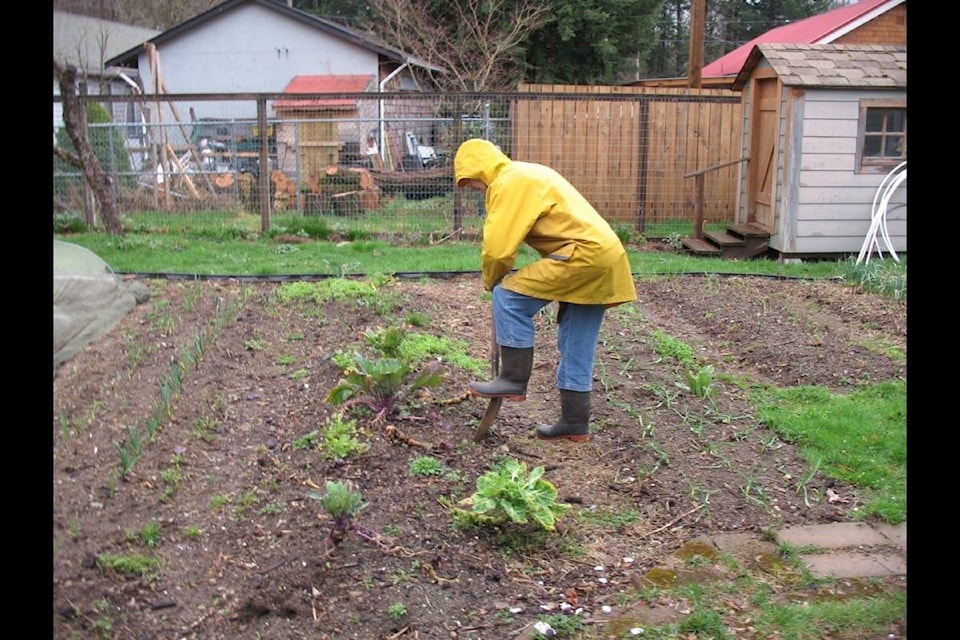By Mary Lowther
Tomorrow, rain or shine, I’m getting things underway.
The first thing I’m going to do is check over the clear plastic I laid last fall over beds marked for vegetables that require the most sun, like tomatoes, corn, cucumbers and peppers. If I hadn’t done this already, I’d do it now. All my sun-loving crops start in seed flats inside so by the time they’re ready to transplant, the beds will have been warmed up and dried out a bit under the plastic.
These beds are four feet wide as this size fits conveniently in the side yard, but the rest of the vegetables grow in three-foot-wide beds in the shadier back yard. I keep my 18-inch-wide paths bare.
At first I used newspaper or hay or grass clippings on the paths as it had worked well in sunny Victoria, but up here any mulches I tried harboured plagues of vegetable eating machines. Since I’ve kept them bare and made a foot wide path around the perimeter, slugs and wood bugs haven’t made much of a dent in the garden. As long as I keep the hoe sharp, trimming off weeds in these paths is a dawdle.
When the rain lets up I can prepare the beds not under plastic by spreading compost and fertilizer over them and digging this into the top six inches. Sandy soils will take a half inch of compost, clay soils a quarter inch. Solomon’s fertilizer goes on at the rate of four quarts per 100 square feet to make a fertile background in which to sow seeds, and preparing the beds ahead of time gives soil microorganisms time to make the nutrients available to plants.
I sow three rows of seeds along the length of each bed and once they’ve sprouted, I lay down soaker hoses along each row, ready to start watering when needed. This year I’ll devote one bed to a little experiment and not water the early spring crops I’ll plant there, like lettuce, peas, spinach and radishes.
We have been clearing the acreage to create more arable land and have a fair amount of alder ash, so I sent in a sample along with my regular soil analysis to see if it is a useful garden amendment. As my hielands Scots mother used to tell me, “Waste not, want not.” Mind you, what I really want right now is a few days of reliable sunshine.
Aficionados of proper Gallic usage might want to check “hieland” on Wikipedia. That may help them understand why we eat the haggis.
